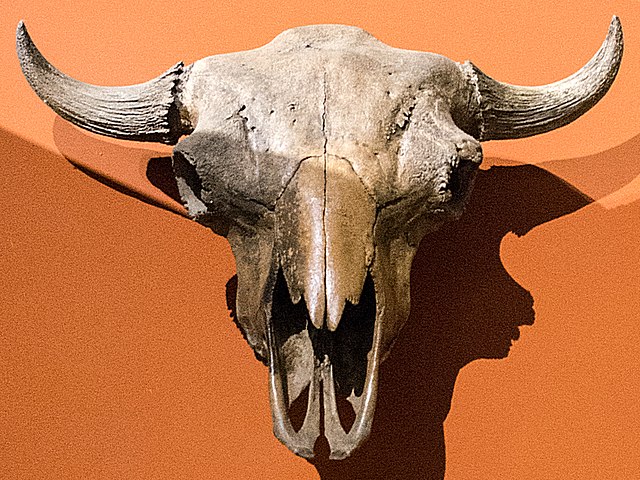The straight-tusked elephant is an extinct species of elephant that inhabited Europe and Western Asia during the Middle and Late Pleistocene. It was larger than any living elephant, with adult males suggested to reach 3.81–4.2 metres (12.5–13.8 ft) in shoulder height, and 11.3–15 tonnes in weight. Like modern elephants, the straight-tusked elephant lived in herds, flourishing during interglacial periods, when its range would extend as far north as Great Britain. Skeletons found in association with stone tools and wooden spears suggest they were scavenged and hunted by early humans, including Neanderthals. It is the ancestral species of most dwarf elephants that inhabited islands in the Mediterranean.
Image: Elephas antiquus Rom (cropped)
Image: Elefantenreich 03
Model
Life restoration of two straight-tusked elephants during the Eemian interglacial in a temperate forest landscape characterised by grassy areas, open woodland and closed forest
The Late Pleistocene is an unofficial age in the international geologic timescale in chronostratigraphy, also known as the Upper Pleistocene from a stratigraphic perspective. It is intended to be the fourth division of the Pleistocene Epoch within the ongoing Quaternary Period. It is currently defined as the time between c. 129,000 and c. 11,700 years ago. The late Pleistocene equates to the proposed Tarantian Age of the geologic time scale, preceded by the officially ratified Chibanian. The beginning of the Late Pleistocene is the transition between the end of the Penultimate Glacial Period and the beginning of the Last Interglacial around 130,000 years ago. The Late Pleistocene ends with the termination of the Younger Dryas, some 11,700 years ago when the Holocene Epoch began.
image of Nazlet Khater skeleton found in Upper Egypt showing early human culture dating back to approximately 30-40 Ka
Bison occidentalis skull at the Cleveland Museum of Natural History.






